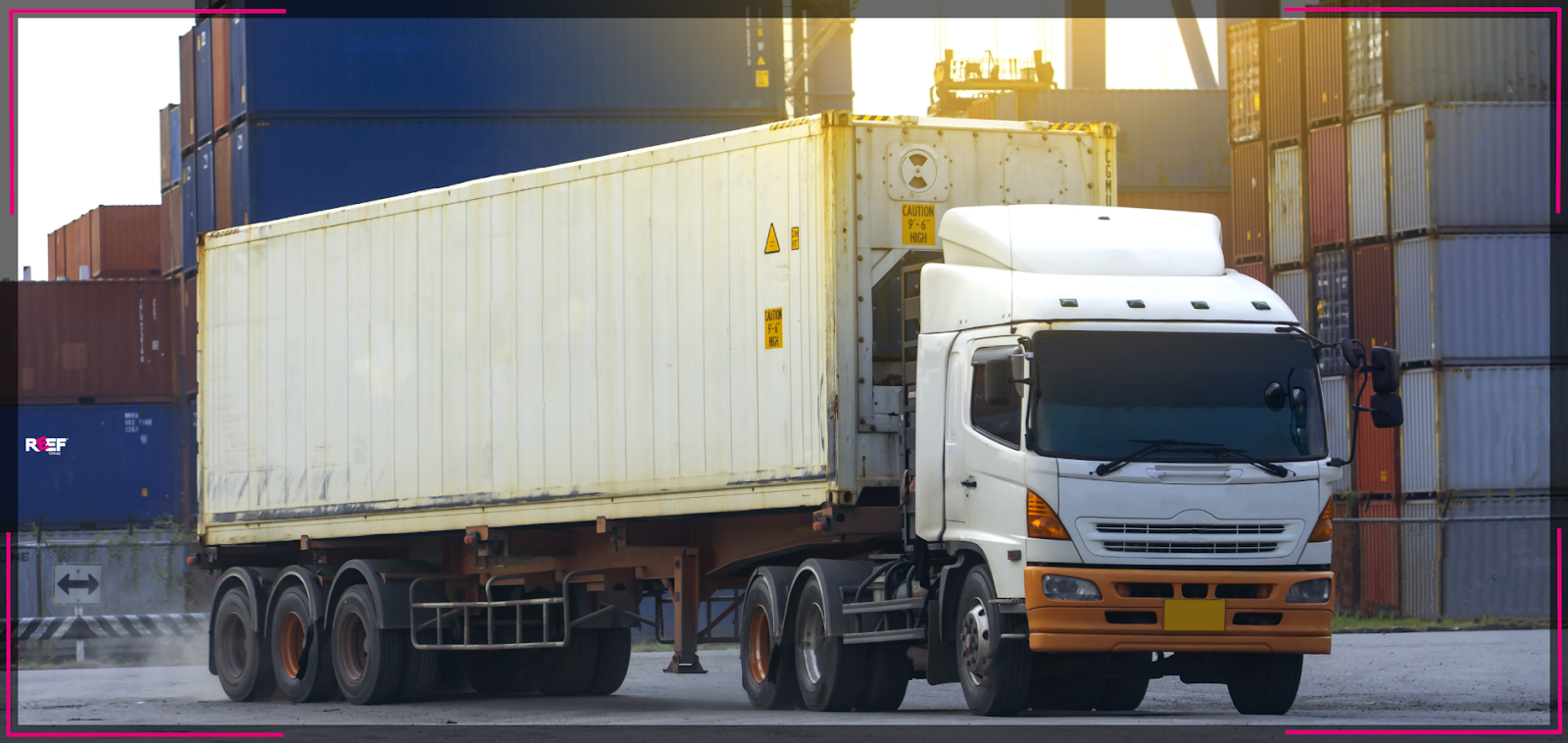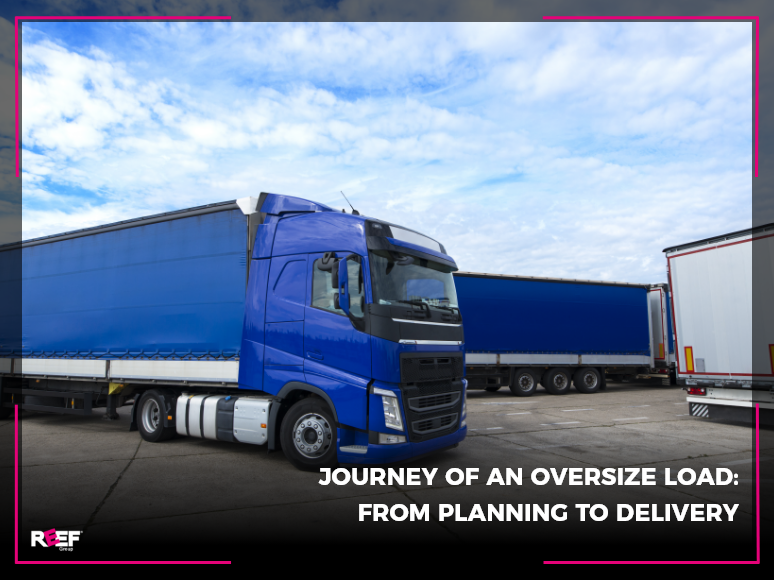Effective Load Balancing Techniques for Oversize Transport

How to Choose a Reliable Machinery Transport Company
November 28, 2023
Risk Management in Logistics: How Transport Services Minimise Business Risks
February 6, 2024
The challenges associated with moving oversized, cumbersome objects from one location to another can be exceptionally complex and dangerous. As a leading Australian transport and logistics company, we have a highly experienced, knowledgeable team that is constantly involved in handling and relocating awkwardly sized products and equipment/machinery items. This article provides insights into the key aspects of the safe transportation of oversized entities and why effective load balancing is so high among them, factors that all Reef Group services involving handling and transporting heavy loads take into account at all times.
Crucial positioning for heavy loading equipment
When we talk about effective load balancing, it is easy to think only of the position of heavy objects on the vehicle that will transport them. However, little thought is given to how they were placed on that transport and how load positioning plays a vital role in their safety and efficiency. Load positioning techniques first require the operators to determine the optimal placement of the lifting vehicle so it cannot tip or sway once the load is engaged. We’ve all seen videos of cranes toppling over as they try to lift extraordinary weights from an unbalanced position. As powerful as they are, an unstable platform or poorly balanced load can bring them crashing down, even if they are well within their weight-lifting capabilities.
Calculating the centre of gravity
Knowing a load’s centre of gravity (CoG) is critical to achieving stability and safe, competent lifting. This information is also integral to placing the load on the transporting vehicle to maintain optimum distribution and balance. Some old-school experts use a mathematical formula to calculate the CoG, but in modern times, it goes without saying that there is computer software to give a helping hand.
Algorithms for load balancing
Regarding computer assistance, modern haulage machines often utilise algorithms that take constantly updated information from load sensors. Corresponding hydraulic adjustments ensure the load stays even, reducing strain and the chances of tipping. Positioning heavy loads usually involves adjusting the tilt and rotation, typically using the same hydraulic system. This gives operators a highly dextrous set of movements and allows them to accurately place even the heaviest loads.
Heavy lifting equipment and attachments
Machines like forklifts that lift and manoeuvre heavy weights often have adjustable features or bespoke attachments to facilitate smooth, effective lifting. From extendable forks to drop-down sidebars and feet to give stability, the range of machines and equipment any successful logistics and transportation company requires can be staggering.
Symmetry
If the transported object is symmetrical, it will likely be loaded symmetrically onto the carrier, but this does not always happen. Symmetrical objects are the perfect way to spread the load evenly and should always be positioned so their weight is distributed across the surface as much as possible. This minimises the risk of imbalance once fully loaded and reduces the chances of tipping.
Counterweights
Terrifying slabs of concrete suspended high above are the counterweights you might see used with tall cranes and other equipment designed to do the heavy lifting. While it is less common to use counterweights on the transporting vehicle itself, it is not unheard of. If the load in question is such an unusual shape that it cannot be placed with its centre of gravity in a balanced way, counterweights may be employed to level things out and restore equilibrium. Transportation logistics companies are loathe to resort to this tactic, as additional weight means additional fuel costs and lifting to be performed, but it remains a viable strategy.
The benefits and applications of efficient load positioning
It might seem obvious that one would want to balance any load before attempting to move it, but what are the actual tangible benefits and applications of doing so? Although variations in industry requirements and the circumstances of lifting heavy loads mean differences exist, some fundamental benefits of effective load positioning include:
- Safety — The primary focus of any self-respecting transportation and logistics company, safety is paramount when manoeuvring and transporting inordinately heavy, unusually shaped objects. Accidents with massive weights happen almost in slow motion, but their immense momentum is such that, once the chain reaction of events starts, it can be virtually impossible to stop. Correct load positioning helps to reduce the risk of accidents in an industry where those that occur are seldom insignificant.
- Efficiency — Reducing the strain on machinery where possible will prolong its working life and reduce the chances of catastrophic failure. This type of protocol-driven efficiency also reduces load times if done correctly and takes the guesswork out of the equation. As load positioning techniques grow more computer-assisted, streamlined, and safety-conscious, businesses experience reductions in downtime and productivity increases.
- Cost-efficiency — Human costs aside, accidents in the transportation and logistics industry seldom come cheap and can be almost ruinously expensive. Suppose the correct safety procedures and computerised calculations are not used in load positioning. In that case, insurance companies will be inclined to deny any claim and drive the company to severe financial difficulty.
Once the load is on the move
The issues with safely manoeuvring oversized, heavy loads might start with loading them safely and appropriately onto the transport in question, but that is only part of the story. Most Australian haulage uses powerful trucks, so we will use those as our example. The vehicles themselves must be able to handle the load in question, and it pays to remember that any vehicle’s load capacity is only as high as its weakest component. Always err on the side of caution and never come within 10% of the vehicle’s stated towing capacity.
Other considerations when mobile
Some tips and tricks our team have learned over the years when transporting massive objects include:
- Plan the route beforehand
- Move slowly and methodically
- Check for weather conditions and adjust as necessary
- Turn cautiously
- Employ a pilot vehicle if possible (this may be required)
- Check the load frequently
- Maintain a routine of training and awareness of technological updates.
Conclusion
From construction sites and manufacturing plants to ports, mines, and storage warehouses, load positioning techniques play a vital role in the smooth running of many industries. Lifting heavy materials will always present a certain amount of danger, no matter how many safety precautions and items of modern equipment are involved. Human error cannot yet be mitigated entirely and is the primary cause of most accidents. However, as technologies advance and techniques are honed and perfected, accidents should drop accordingly.
Contact us
If you require assistance moving an oversized load or have any questions or comments, please get in touch today. We have decades of experience solving the most complex logistical challenges using innovative solutions and state-of-the-art technology. You can rest easy knowing you are safe when you entrust us with your precious cargo or need logistical advice and guidance.


